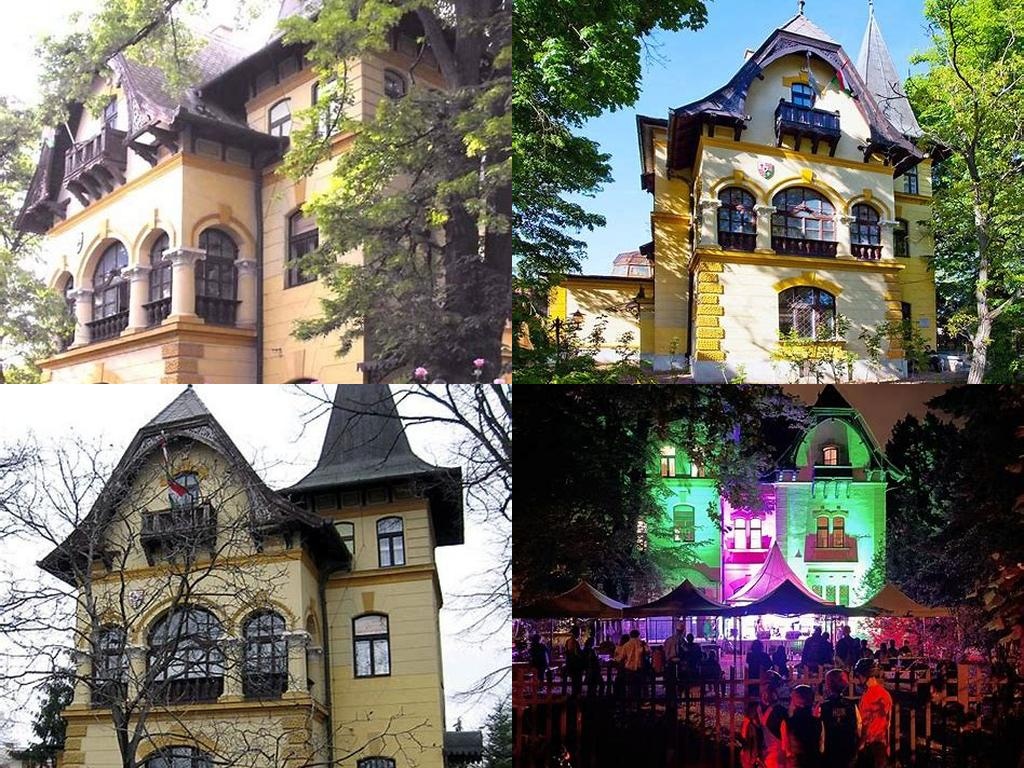
Erdős Renée-ház Muzeális Gyűjtemény és Kiállítóterem sits quietly among the leafy residential quarters of Mátyásföld, a less-trodden pocket of Budapest that once pulsed with the energy of an artist’s colony. Today, this villa offers patient visitors a portal to the traces of past literary and artistic ferment as well as the tranquil everyday life of a bygone era. Sometimes your eye is drawn away from the city’s busy heart, and it is to places like this, off the main tourist arteries, that Budapest reveals its layered charm to those who dig a bit deeper.
The white, slightly whimsical art nouveau villa was the home of the remarkable poet and writer Renée Erdős. A trailblazing Hungarian author, she set up shop here in 1910, fresh after the completion of the villa that now bears her name. Erdős wove her life into her works, and her home became an intellectual salon, a space thick with the hum of artistic discourse. Walking through the house, you get a rare sense of lived history – her furniture and personal objects, preserved in the airy, sun-dappled rooms, allow you to imagine evenings of heated debates about literature, politics, and society. Old photographs line the walls, and you catch yourself glimpsing into the eyes of Renée Erdős herself, searching for that spark which made her one of the era’s most distinctive literary voices.
For those interested in Hungary’s complex 20th-century cultural tapestry, the Erdős Renée-ház offers more than just the writer’s preserved quarters. The museum’s collection extends to the entire ambience of intellectual life here, hosting rotating exhibitions about Mátyásföld’s artists and civil society, ranging from painting and sculpture to community activism. Sometimes the focus returns to Erdős herself—her often provocative poetry and prose, her advocacy for women’s issues, her fraught relationships and correspondences—reminding us that she was both very much a product of her time and a progressive force ahead of it.
Don’t expect a grand, palatial museum; this is a house that feels lived-in, warm, and intimate. The lush garden, though small, is perfect for a quiet read or contemplation. On a clear afternoon, sunlight pours through stained glass windows with motifs reminiscent of early 1900s Budapest, casting dappled colors onto parquet floors. It’s a place where you can reflect, away from crowded sightseeing spots, almost as if you’ve dropped in on a friend’s genteel home for afternoon tea—except your friend is a celebrated poet, and her life’s mementos are under glass for you to peruse.
Occasionally, the museum holds chamber concerts, poetry readings, and community art events that attract locals as much as curious travelers. If you’re lucky enough to stumble upon such an event during your visit, you’ll discover the house not just as a repository of the past, but as a living, breathing piece of the budding cultural scene in this corner of Budapest. The staff are as likely to be chatting with artists dropping by as giving visitors unhurried insights into the history of the neighborhood—one that was once dotted with villas belonging to film stars, musicians, and diplomats in the early 20th century.
Visiting the Erdős Renée-ház Muzeális Gyűjtemény és Kiállítóterem promises far more than a cursory brush with literary history: it’s a passage into the inner world of creativity, resilience, and the ambition of one extraordinary woman, set within the wider context of an entire community’s artistic journey. Take your time, stroll slowly, and listen for the echoes of spirited conversation in each lovingly curated room—you may just leave inspired by the Hungarian spirit of making beauty from intellect and life itself.





